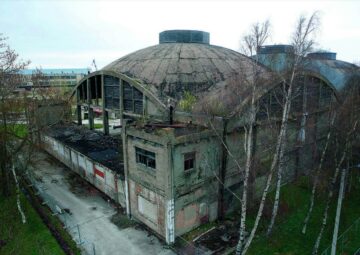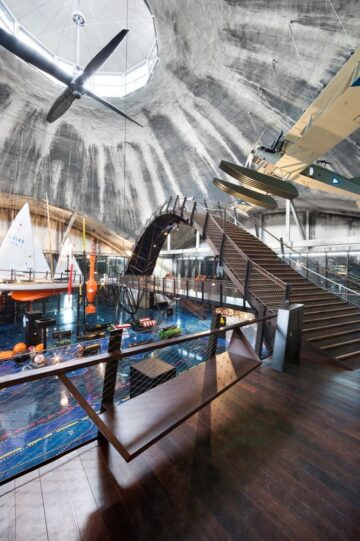Challenge(s)
How can port authorities redevelop historic structures in sustainable ways?
Good practice
Use the potential of the presence of water to meet energy needs
Water, a ubiquitous element in port regions, serves as both a landscape feature and a resource for energy efficiency, gaining even more relevance in the face of climate change. In a remarkable display of innovation, it can be harnessed for the heating and cooling systems of buildings, significantly enhancing their sustainability and contributing to carbon neutrality. The Estonian Maritime Museum used such an innovation for their massive early 20th-century seaplane hangars that were transformed into an exhibition gallery. The key to this transformation was the seawater heating system proposed by the Tallinn Technical University. This system ensured that the large 6,300 m2 exhibition hall was heated and cooled more sustainably than ever before.
Case study
The Estonian Maritime Museum, a beacon of knowledge and respect for the sea, was founded in 1935 in Tallinn by former captains and sailors. Its rich history of relocation culminated in 1981, when its main exhibition found a home in the 500-year-old Fat Margaret Tower in Tallinn Old Town. In May 2012, the Maritime Museum expanded with the opening of an additional exhibition space at the Seaplane Harbour. This expansion included the refurbishment of the Seaplane Hangars, which now houses artefacts such as the Lembit submarine, constructed in 1937 by the British Vickers-Armstrongs shipyard, a Short 184 seaplane, the Maasilinn ship (the oldest sunken ship found in Estonian waters), and various other authentic items including sail ships, boats, and naval mines.
The hangars themselves could be considered part of the city’s maritime history, dating back to 1916/1917. KOKO architects were assigned to refurbish the interior of the seaplane hangars as the broken-up cement domes needed to be insulated to protect the visitors and the museum pieces. In collaboration with Tallinn Technical University professor Karl Õiger, they devised a new way of heating the massive early 20th-century hangar. They utilised seawater to warm up and cool down the domes. By circulating seawater through a heat pump, it was possible to maintain a comfortable temperature of +17 degrees Celsius, even in the harshest winter conditions.
Additional information
Seawater Heating and Cooling as seen and explained in Norway



